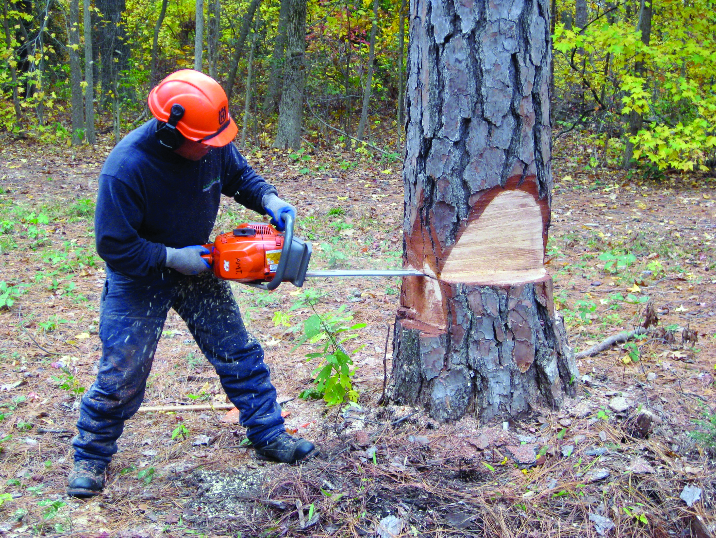Article contributed by ArborMaster
One of Noah Webster’s definitions of an accident is an unplanned event. So, it stands to reason that to avoid accidents, plan your work and work your plan! When felling trees, it is vital to have and use a felling plan. The five-step felling plan incorporates up-to-date cutting methods, is widely used by professional chainsaw operators worldwide and has recently been adopted into the ANSI Z-133.1 Standard for tree-care operations. Using the five-step felling plan will help you to achieve successful results consistently.
#1 – Identify height and hazards – Decide on the most desirable direction to fell the tree. Use a reliable method to determine the height of the tree relative to the direction of fall. Look for tree defects, decay, electrical conductors, or any other characteristics of the tree that may affect the felling plan. Consider obstacles within the felling site such as structures, pavement and outdoor furnishings. Some can be moved if necessary; others will have to be avoided. Assess the strength and direction of the wind.

#2 – Assess the side lean – This often determines whether or not the hinge will hold and whether or not we may need to remove some weight from the bad side. This also gives us the information to determine the “good” and “bad” sides of the tree for the feller to stand when making the final cut.
#3 – Escape route – Always think about your escape route before you begin the felling operation. The escape route should be at a 45-degree angle opposite the felling direction. Be sure to walk your escape route before making any felling cuts and clear any obstacles or hazards before beginning to fell the tree. (Remember to use your escape route as soon as or before the tree begins to fall.)
#4 – Hinge plan – The face notch and hinge are critical to safe, accurate, consistent felling results. Plan the size, depth and placement of the notch. Determine the desired thickness and length of the hinge.
#5 – Back cut technique – The back cut is often taken for granted, yet it is often the cause of felling accidents. Forward or back lean may determine what kind of back cut you will use: the straight forward back cut or the bore cut. The degree of forward or back lean will determine how many wedges and/or whether a pull rope will be necessary and how much power may be required to pull/move the tree over the pivot point (the hinge). Remember that if the tree is too thin, there may not be enough wood for a notch, hinge, bore cut and back/holding strap. In that case it will be necessary to use the straight forward back cut. Remember to finish the felling cut on the “good” side of the tree and use your escape route as soon as the tree begins to fall.


